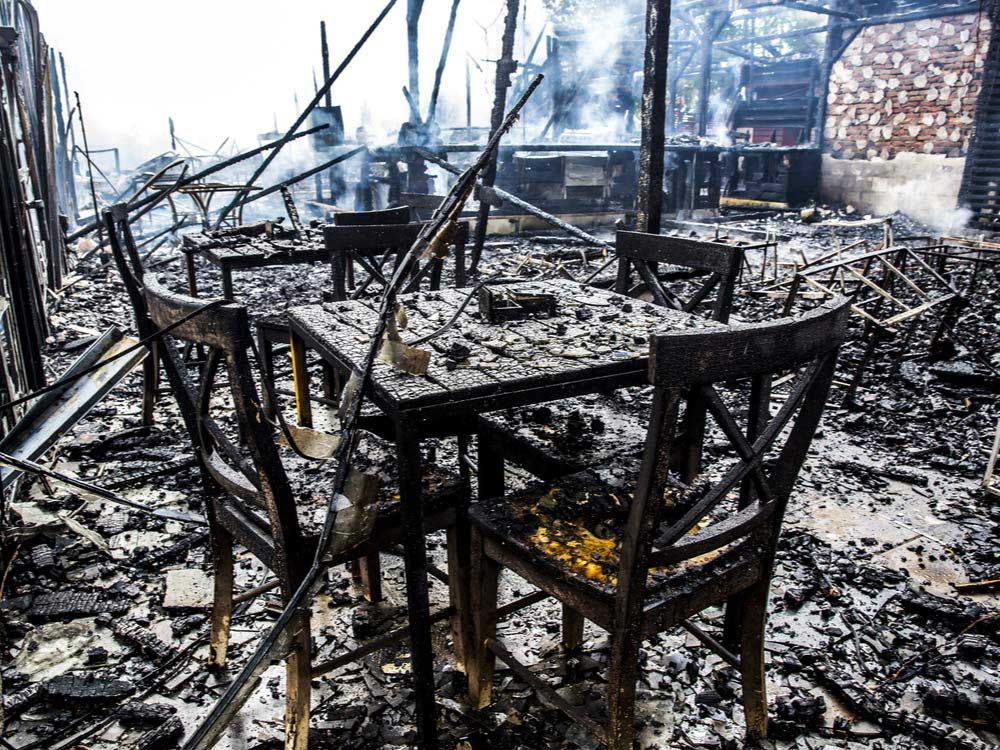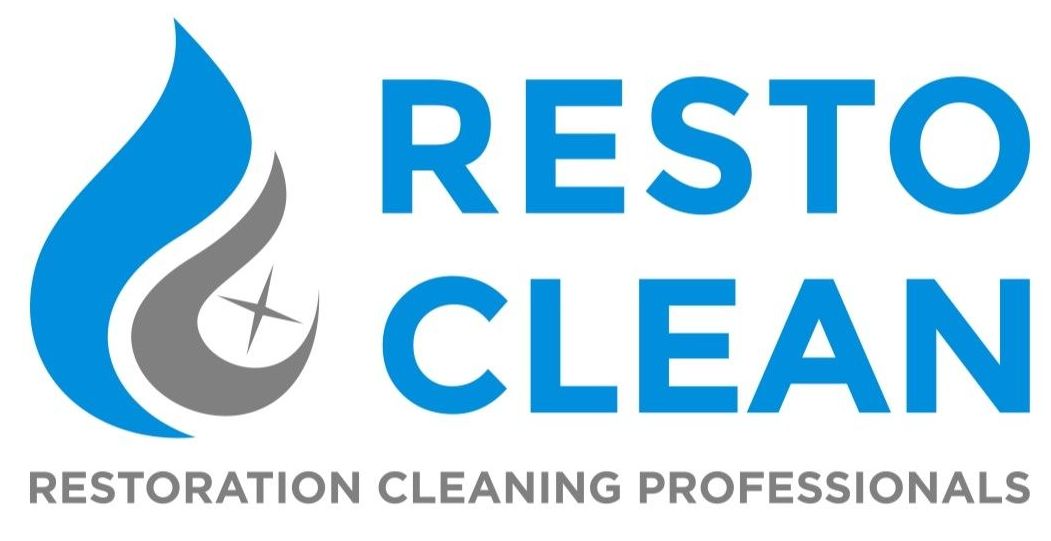Blog

A fire is a devastating event that can leave behind not only physical damage but also emotional scars. When the flames are finally extinguished, the road to recovery begins. It's essential to understand the importance of professional fire damage restoration and learn about effective ways to prevent such disasters in the first place. Why Professional Fire Damage Restoration Matters When a fire engulfs your home, the aftermath can be overwhelming. The consequences go beyond charred walls and burnt belongings; there are hidden dangers that only professionals can manage effectively: Safety: Fire-damaged structures can be unstable, posing a significant risk to anyone attempting to enter. Professional restoration teams are equipped to assess the structural integrity and ensure it's safe to enter the premises. Smoke and Soot: Smoke and soot damage extends far beyond the visible areas. They can penetrate walls, HVAC systems, and even ductwork. Professionals have the tools and expertise to thoroughly clean and deodorize affected areas. Water Damage: Often, firefighting efforts involve significant water usage. This can lead to water damage, mold growth, and further structural issues. Restoration experts can mitigate water damage and prevent mold infestations. Content Restoration: Fire-damaged personal belongings often carry immense sentimental value. Professional restoration services can salvage, clean, and restore items that might otherwise be lost forever. Insurance Claims: Dealing with insurance after a fire can be complex. Restoration professionals can document the damage, provide accurate estimates, and communicate with insurance adjusters to streamline the claims process. Thorough Cleanup: Fire damage is not limited to what's visible. Professionals ensure that hidden hazards and toxins, like asbestos or lead, are properly managed during the restoration process. Preventing Fire Damage: Safety First While professional fire damage restoration is vital after a fire, preventing a fire in the first place is even more crucial. Here are some key steps to minimize the risk of fire: Install Smoke Alarms: Ensure you have working smoke alarms on every level of your home and inside each bedroom. Regularly check and replace batteries. Fire Extinguishers: Place fire extinguishers in key areas like the kitchen, garage, and near heating appliances. Know how to use them. Electrical Safety: Regularly inspect electrical wiring and appliances for signs of wear or damage. Avoid overloading circuits and extension cords. Safe Cooking Practices: Stay vigilant in the kitchen while cooking. Keep flammable materials away from the stove and turn off appliances when not in use. Heating Safety: Maintain heating systems, fireplaces, and chimneys. Keep space heaters at a safe distance from flammable materials. Candle Caution: Use candles with care, keeping them away from curtains and other flammable objects. Smoking Safety: If you smoke, do so outdoors. Use deep, sturdy ashtrays, and ensure cigarettes are fully extinguished. Escape Plan: Develop and practice a fire escape plan with your family. Ensure all members know multiple ways to exit the home. Fire damage can be catastrophic, but with prevention and professional restoration, you can move forward and rebuild your life after a fire. Safety awareness and preparation are your best allies in reducing the risk of such a devastating event.

Water damage is a homeowner's nightmare. Whether it's a burst pipe, a leaky roof, or a malfunctioning appliance, water can wreak havoc on your home if left unaddressed. When water damage occurs, acting swiftly is crucial to minimize the extent of the damage and prevent costly repairs. In this blog post, we will guide you through the steps to handle water damage in your home as soon as it occurs. 1. Safety First Before you begin any water damage cleanup, prioritize safety. Ensure that the affected area is safe to enter. Turn off the electricity in the affected area if there's standing water to avoid electrical hazards. If you're unsure about safety, it's best to wait for professionals to assess the situation. 2. Identify and Stop the Source Once you've established safety, the next step is to identify the source of the water and stop it. This could involve shutting off the main water supply to your home, turning off the water source to a specific fixture, or fixing a leaking pipe. Stopping the water source is the most effective way to prevent further damage. 3. Document the Damage Before you start cleaning up or making any repairs, document the damage. Take clear photographs or videos of the affected areas. This documentation will be essential for insurance claims, should you need to file one. 4. Remove Standing Water If there's standing water in your home, you'll need to remove it as quickly as possible. The longer water sits, the more damage it can cause and the higher the risk of mold growth. Use a wet-dry vacuum, pumps, or buckets to remove the water. Towels and mops can also be helpful for smaller areas. 5. Dry and Dehumidify After removing the standing water, it's crucial to thoroughly dry the affected areas. Use fans, dehumidifiers, and open windows to promote air circulation and speed up the drying process. Mold can start growing within 24 to 48 hours, so time is of the essence. 6. Salvage and Remove Damaged Items Sort through your belongings in the affected area. Salvage what you can and remove items that are beyond repair. Some items may be salvageable with proper cleaning and drying, while others may need to be discarded. Be sure to check for sentimental items as well. 7. Clean and Disinfect Once the area is dry and items are removed, it's time to clean and disinfect. Use a mixture of water and bleach or specialized cleaning products to kill any remaining bacteria and prevent mold growth. Pay close attention to walls, floors, and other surfaces. 8. Assess Structural Damage Inspect the structure of your home for any damage caused by the water. Look for signs of weakened ceilings, warped floors, or compromised walls. Address any structural issues promptly to prevent further problems down the road. 9. Contact Your Insurance Company If the water damage is significant, contact your insurance company to report the incident and begin the claims process. Provide them with the documentation and photographs you collected earlier. Your insurance may cover some or all of the repairs and replacements needed. 10. Prevent Future Water Damage Once you've handled the immediate water damage, take steps to prevent it from happening again. Regularly inspect and maintain your plumbing, roof, gutters, and appliances. Install water leak detection devices to catch issues early. In conclusion, water damage in your home demands immediate attention. By following these steps, you can minimize the damage, protect your property, and prevent future issues. Remember that while you can address some water damage on your own, it's essential to call in professionals for extensive damage or if you're unsure about safety. Acting swiftly is key to a successful recovery from water damage.

Water damage and mold growth are two closely interconnected issues that often arise hand in hand. However, it's essential to recognize the distinctions between these challenges and the unique approaches required for effective restoration. In this article, we'll delve into the differences between mold and water restoration, shedding light on how a Twin Falls restoration company can address each concern to ensure your property's safety and well-being. Water Damage Restoration: Tackling the Source: Water damage restoration primarily deals with the aftermath of water-related incidents such as leaks, floods, or burst pipes. The focus is on swiftly removing excess water, drying out affected areas, and preventing further damage. A Twin Falls restoration company skilled in water restoration will have the expertise and equipment to assess the extent of the water damage, extract water efficiently, and employ industrial-grade dehumidifiers to thoroughly dry the space. This process not only prevents structural deterioration but also reduces the risk of mold growth. Mold Remediation: Addressing Hidden Threats: Mold is a common consequence of untreated water damage. Mold spores thrive in damp, humid environments and can begin growing within 24-48 hours after water exposure. Mold remediation focuses on identifying, containing, and safely removing mold colonies to prevent health hazards and further property damage. A professional mold remediation process from a Twin Falls restoration company involves thorough assessment, containment to prevent spore spread, proper removal techniques, and preventive measures to curb future growth. The Interplay Between Mold and Water Damage: While water damage provides the ideal conditions for mold growth, it's essential to recognize that mold can also exacerbate water-related issues. Mold can contribute to deterioration of materials and compromise indoor air quality, potentially causing health concerns. That's why a comprehensive approach that addresses both water damage and potential mold growth is critical. A restoration company in Twin Falls that specializes in both water and mold restoration can effectively break this cycle and ensure a thorough recovery process. Choosing the Right Restoration Company: When faced with water damage or mold concerns, it's crucial to partner with a restoration company in Twin Falls that has expertise in both fields. Professionals who can offer a holistic approach will not only address the visible damage but also understand the potential risks and hidden threats. By choosing a restoration company that specializes in both water and mold restoration, you ensure a comprehensive restoration process that safeguards your property's integrity and the health of its occupants. Conclusion: Water damage and mold growth are interconnected challenges that require distinct restoration approaches. Recognizing the differences between these issues and the importance of addressing both ensures a thorough recovery process. A Twin Falls restoration company experienced in both water and mold restoration can provide the expertise needed to effectively restore your property, safeguard its inhabitants, and prevent future issues. Don't wait – take proactive steps to address water damage and mold concerns promptly for a safer, healthier living environment.

